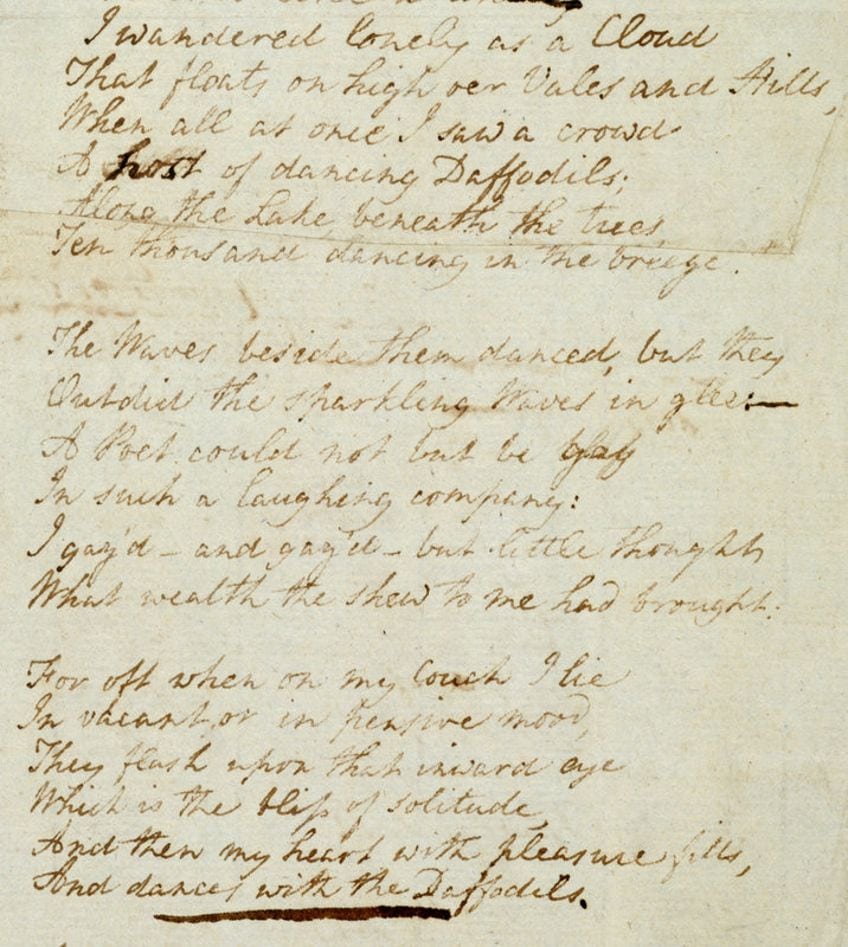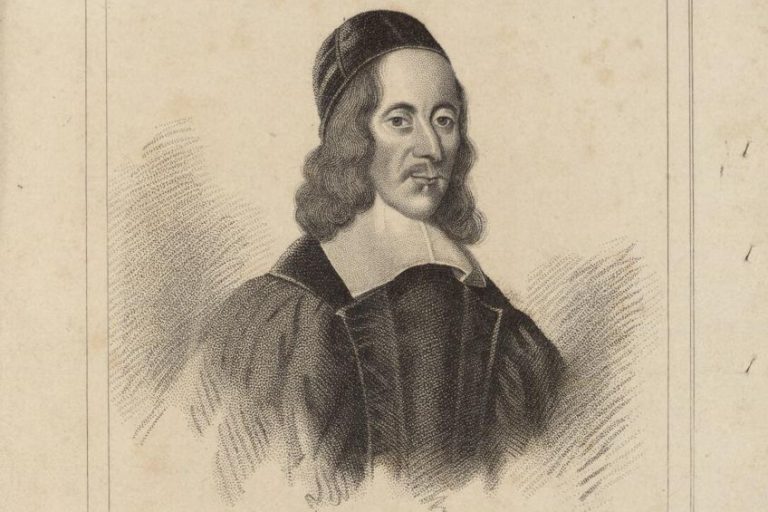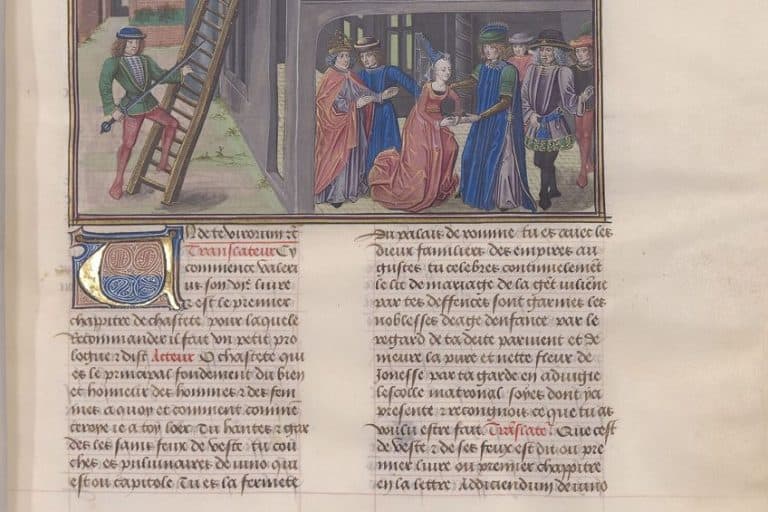Poems With Similes – 10 of the Best Illustrated Examples
A poem without a simile is like a face without a smile. That itself was a simile, but it was also a terrible one, so let’s have a look at some better poems with similes. We are going to examine ten different famous poems with similes to see why poems make use of this extremely common poetic technique. There are many different reasons to use this technique, and our short list should give a good overview of those reasons. If you want to learn about poetry using similes, then hop on board, and let’s have a look!
Table of Contents
- 1 Poems With Similes
- 1.1 A Red, Red Rose (1794) by Robert Burns
- 1.2 I Wandered Lonely as a Cloud (1807) by William Wordsworth
- 1.3 The Crickets Sang (1866) by Emily Dickinson
- 1.4 Autumn (1909) by T.E. Hulme
- 1.5 The Love Song of J. Alfred Prufrock (1915) by T.S. Eliot
- 1.6 Harlem (1951) by Langston Hughes
- 1.7 Tulips (1962) by Sylvia Plath
- 1.8 Lovesong (1967) by Ted Hughes
- 1.9 Awaking in New York (1983) by Maya Angelou
- 1.10 Marrysong (1989) by Dennis Scott
- 2 Frequently Asked Questions
Poems With Similes
Similes are an immensely common poetic technique. This particular technique is found in far more places than poetry and, of the many different poetic devices, it’s likely one of those that is most used outside of poetic language. We like to use similes even when we do not think of them as a simile. We simply see it as a comparison, because that’s what a simile is, it’s a comparison between two or more things.

In technical terms, a simile entails a specific kind of comparison that distinguishes it from a metaphor. While a metaphor entails a direct comparison, such as by saying that something is something else, a simile is a less firm form of a comparison. One of the central characteristics of this form is that it uses the words “like” or “as” in this comparison. So, “John is a snake” is a metaphor (provided that John is not the name of an actual snake), whereas “John is like a snake” is an example of a simile.
The list below will be an examination of simile in poetry. There are many different simile examples in poetry, but we are only going to examine ten famous poems with similes today. We are going to examine why these poems make use of this particular poetic technique.
There are many reasons a comparison of this nature might be used, and these ten simile examples in poetry are not going to be a comprehensive array of poems with similes, but they should give a good overview.
A Red, Red Rose (1794) by Robert Burns
| Date Published | 1794 |
| Type of Poem | Lyrical ballad |
| Rhyme Scheme | ABAB and ABCB |
| Meter | Iambic tetrameter and iambic trimeter |
| Topic | Love |
A Red, Red Rose is one of the most famous poems by Robert Burns, and the text is a great example of the use of simile in poetry. The poem is concerned with a deep love for another person, and it focuses on some of the common aspects of love that are often explored in love poetry, such as the promises of a love that will last forever.

When it comes to the use of simile in this particular poem, one of the most famous lines makes use of this comparative device to state that “my Luve is like a red, red rose”. Roses have been a common fixture in love imagery for a very long time, and the connection between the rose, with its combination of beauty, layered biological design, and the fact that it has thorns, serves as a strong image of love in this poem too.
In addition, the use of the color red is of prime importance here as red is strongly associated with love, passion, and other similar emotions.
I Wandered Lonely as a Cloud (1807) by William Wordsworth
| Date Published | 1807 |
| Type of Poem | Lyric poem |
| Rhyme Scheme | ABABCC |
| Meter | Iambic tetrameter |
| Topic | Nature |
I Wandered Lonely as a Cloud is one of the most famous poems that William Wordsworth ever wrote. This immensely famous Romantic poet is also often considered to be one of the most important, and the very first line in that poem is also seen as one of the most famous of all English poetry. That line can also be seen reflected in the title of the poem.

The poem itself focuses on a stunning field of daffodils and the emotional response that the speaker feels when encountering them. That first line with its simile of “I wandered lonely as a cloud” is simultaneously evocative of lonesomeness and the natural world. The comparison allows for the poem to link the speaker and the natural world together. The speaker is like a natural object that wanders without thought. It eventually comes upon another piece of nature and must contend with that part of nature.
It is a fantastic and beautiful means of using this comparative device.
The Crickets Sang (1866) by Emily Dickinson
| Date Published | 1866 |
| Type of Poem | Lyric poem |
| Rhyme Scheme | ABBB CCD EEFE |
| Meter | Variable |
| Topic | Routine |
The Crickets Sang is one of the best poems by Emily Dickinson, and it is concerned with the natural world. The natural world is one of routines that continually perpetuate themselves. The sun rises and falls every day, the creatures come out to do their work, and everything starts over the very next day. It is an endless and beautiful cycle that does not need human meaning behind it.

When it comes to poems with similes though, this is also a great example as similes are used throughout the poem through the use of the word “as”. The first of these compares the twilight of the day as being standing “as strangers do”, which evokes an image of politely waiting for you to finish what you are doing before interrupting you. To further add to this image, it states that it is as if the twilight stranger waits “with hat in hand”.
The twilight is simply waiting to be let in.
Autumn (1909) by T.E. Hulme
| Date Published | 1909 |
| Type of Poem | Imagist poetry |
| Rhyme Scheme | ABCDEFG |
| Meter | Iambic tetrameter |
| Topic | Autumn |
Autumn is a stunning poem by T.E. Hulme and has become noted for its connection to Imagist poetry, in which an image of some kind is produced through the poem. In this case, it describes an autumn night and the way in which the moon peeks out from over a hedge as he wanders his way through. This use of personification, in which the moon is compared to a person, is a fantastic way in which this image can be produced.

The poem’s use of a simile lies in this comparison. The moon, as it leans over a hedge, is “like a red-faced farmer”. This implies that the moon is watching and waiting. It is a person, and the remainder of the poem continues this image by stating that the speaker did not stop to speak to the moon and instead carried on his way.
This is a great way to use simile in poetry as it can aid in personification and furthering a human-like quality to the world.
The Love Song of J. Alfred Prufrock (1915) by T.S. Eliot
| Date Published | 1915 |
| Type of Poem | Narrative poem |
| Rhyme Scheme | None |
| Meter | None |
| Topic | Inner monologue |
The Love Song of J. Alfred Prufrock is often considered to be one of the greatest works of Modernist poetry and a poem that helped launch the career of T.S. Eliot. The poem is a rather dark thing that focuses on the inner monologue of an unhappy and often unpleasant man. However, the poem opens with one of the best-known similes in poetry, and it is used to staggering effect.

The first true stanza opens with the speaker speaking to a lover of some kind and saying that they should go out when the nighttime has fully encompassed the sky and stretched out “like a patient etherized upon a table”. For those unfamiliar with the older term, to “etherize” is to knock someone out. Ether was what we used before modern anesthetic was developed, and so the image this simile conjures is one of a medical patient strapped to a table awaiting surgery.
It’s an immediately confrontational image to open a poem with, especially a love poem.
Harlem (1951) by Langston Hughes
| Date Published | 1951 |
| Type of Poem | Lyric poem |
| Rhyme Scheme | Variable |
| Meter | None |
| Topic | African-American experience |
Harlem is one of the most famous poems by Langston Hughes, but the simile that is used in this particular poem is one that is likely best-known today because it was used as the title for Lorraine Hansberry’s most famous play, A Raisin in the Sun. The play draws on similar inspiration to the poem, and so it is used to strong effect there. However, why is it used in the poem in the first place?

Well, the poem opens with a question, and it is one of the most famous questions ever posed in poetry: “What happens to a dream deferred?”. The simile is what follows it when it reinforces the question by asking “does it dry up/like a raisin in the sun?”. This simile is used to present a difficult image.
A raisin is already something that has dried up, and so the tautological nature of the simile is what gives its strength.
Tulips (1962) by Sylvia Plath
| Date Published | 1962 |
| Type of Poem | Free verse |
| Rhyme Scheme | None |
| Meter | None |
| Topic | Confession |
Tulips is a superb example of the kind of confessional poetry that Sylvia Plath is so well-known for producing. The poem is a means of exploring the ways that she feels while she is in the hospital. It is not a good experience for her, and she is forced to deal with it as best she can, and, in the poem, many similes are used to aid in understanding the way that she is feeling.

The poem uses “like” to compare her possessions to a pillbox, her tulips to a screaming baby, and the water is like the sea. Most of these comparisons focus on the tulips beside her bed in the hospital. They are meant to be a thing that brings her comfort, but they are instead a dark and unhappy reminder of her own mental state.
She despises them, but they remain beside her.
Lovesong (1967) by Ted Hughes
| Date Published | 1967 |
| Type of Poem | Non-standard poem |
| Rhyme Scheme | None |
| Meter | None |
| Topic | Love |
Lovesong is a stunning poem by Ted Hughes, and it is concerned with love. However, unlike many love poems, it does not only focus on the happy side of things, and instead focuses on the darker and more unhappy elements of the realities of love and relationships. The use of simile also evokes an animal image, which was a common feature of the poetry of Ted Hughes.

The poem states that “their deep cries crawled over the floors/like an animal dragging a great trap”. The image of an animal that is clawing for its own survival as it drags a hunting trap behind it suggests that unhappiness can be felt in moments and that those moments are unbearable and painful ordeals.
It is not a pleasant image, but one that many in relationships can likely understand on some level.
Awaking in New York (1983) by Maya Angelou
| Date Published | 1983 |
| Type of Poem | Non-standard poem |
| Rhyme Scheme | None |
| Meter | None |
| Topic | New York City |
Awaking in New York is a poem about life in the city. More specifically, it’s about waking up in New York City. It is especially aimed towards those who likely did not grow up or experience immensely busy cities. It uses a wide array of evocative language to create this image of the bustling city, but it also makes use of similes.

The poem makes use of a simile using “as” when it states that when the speaker wakes up, they are “an alarm, awake as a/rumor of war”. This evocation of a warlike image compares the cityscape, and the hustle and noise that can be found in every direction is like a warzone.
The image is not a particularly pleasant one.
Marrysong (1989) by Dennis Scott
| Date Published | 1989 |
| Type of Poem | Loose sonnet |
| Rhyme Scheme | None |
| Meter | None |
| Topic | Relationships |
Marrysong is a beautiful poem about relationships. The poem is about a speaker who contemplates the person that he loves. He thinks about this woman as a vast and untamable wilderness that he has tried to chart as if he were a cartographer, but she is always changing. The woman he fell in love with is no longer around, but she’s now a new woman, and he loves her just as much as ever, and looks forward to seeing how she will change in the future.

The poem makes use of a simile to reinforce this cartographic idea by saying that with every day, the “shadows of her love shortened or grew/like trees seen from an unexpected hill”. The landscape is eternally changing. The landscape of her mind. Part of the landscape is the trees and the hills, but the poem does also use the image of oceans, shores, and many other natural elements to continue this comparison.
A simile is like a paintbrush. Often necessary but not always used. We have, over the course of this article, looked at ten different examples of poetry using similes. This list of famous poems with similes should give a good overview of how and why the simile in poetry is such a common thing. This technique can be found throughout poetry and ordinary language because comparisons are a natural thing for us to do. They are not necessarily needed, but they certainly can add something to a poem, and there are many other simile examples in poetry that are worth exploring out in the world.

Frequently Asked Questions
What Is a Simile?
A simile is a poetic device that refers to a specific type of comparison. Comparisons are used throughout poetry to connect one thing to another. In the case of this particular technique, it involves the use of the words like or as to establish this comparison. For instance, love is like a rose. This is a simile because it uses like to compare love to a rose. Why has this comparison been made? There are many possible reasons. Roses are layered and beautiful, and so is love, but roses also have thorns, and thorns can come to represent the sadness that can be found in love, such as through heartbreak. These kinds of comparisons could be made for a huge number of reasons.
How Does a Simile Differ from a Metaphor?
Similes and metaphors are often seen as very similar to one another. They are both poetic devices that refer to a type of comparison. Metaphors are those comparisons that are more direct, and they do not need to use any specific words to create a connection. A simile, on the other hand, is noted for specifically making use of the words like or as when making this comparison between two or more things. It is also quite an easy thing to make sure you have not confused one for the other. All you need to do is look out for those two comparison words, and if you’ve found them, you have a simile on your hands!
What Is the Effect of the Simile in Poetry?
There are many different possible effects of simile in poetry. Poems with similes use this technique to create a comparison between two or more things. This can often be done to produce a jarring effect, or it can be used to make some kind of lovely connection. For instance, comparing someone to something good can create a positive image, such as comparing someone to a beautiful, sunny day. However, comparing someone to something like a storm produces a comparison that is quite different.
What Are Some Famous Simile Examples in Poetry?
There is likely an uncountable number of famous poems with similes, but some good examples include poems like I Wandered Lonely as a Cloud (1807) by William Wordsworth, The Love Song of J. Alfred Prufrock (1915) by T.S. Eliot, and Tulips (1962) by Sylvia Plath. However, this is a tiny subset of simile examples in poetry. It is one of the most common techniques, and so you will likely be hard-pressed to find a famous poet who has never made use of a simile in their work.
Which Poets Are Famous for Their Use of the Simile in Poetry?
Many poets have made use of similes in their poems. This is considered to be one of the most common poetic techniques. The simile and the metaphor are in the poetry of practically every poet. This does not mean that all poems use simile and metaphor, but rather that they are so common that everyone has likely used them. This means that William Shakespeare, William Wordsworth, T.S. Eliot, Sylvia Plath, and innumerable others have produced famous poetry using similes. The technique is everywhere, and so many have made use of it.
Justin van Huyssteen is a freelance writer, novelist, and academic originally from Cape Town, South Africa. At present, he has a bachelor’s degree in English and literary theory and an honor’s degree in literary theory. He is currently working towards his master’s degree in literary theory with a focus on animal studies, critical theory, and semiotics within literature. As a novelist and freelancer, he often writes under the pen name L.C. Lupus.
Justin’s preferred literary movements include modern and postmodern literature with literary fiction and genre fiction like sci-fi, post-apocalyptic, and horror being of particular interest. His academia extends to his interest in prose and narratology. He enjoys analyzing a variety of mediums through a literary lens, such as graphic novels, film, and video games.
Justin is working for artincontext.org as an author and content writer since 2022. He is responsible for all blog posts about architecture, literature and poetry.
Learn more about Justin van Huyssteen and the Art in Context Team.
Cite this Article
Justin, van Huyssteen, “Poems With Similes – 10 of the Best Illustrated Examples.” Art in Context. October 30, 2023. URL: https://artincontext.org/poems-with-similes/









